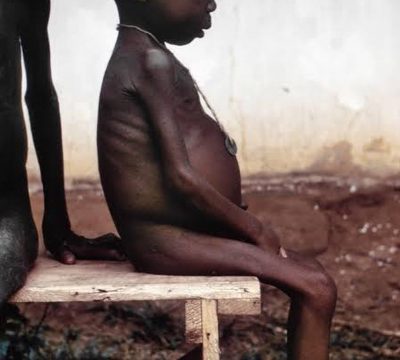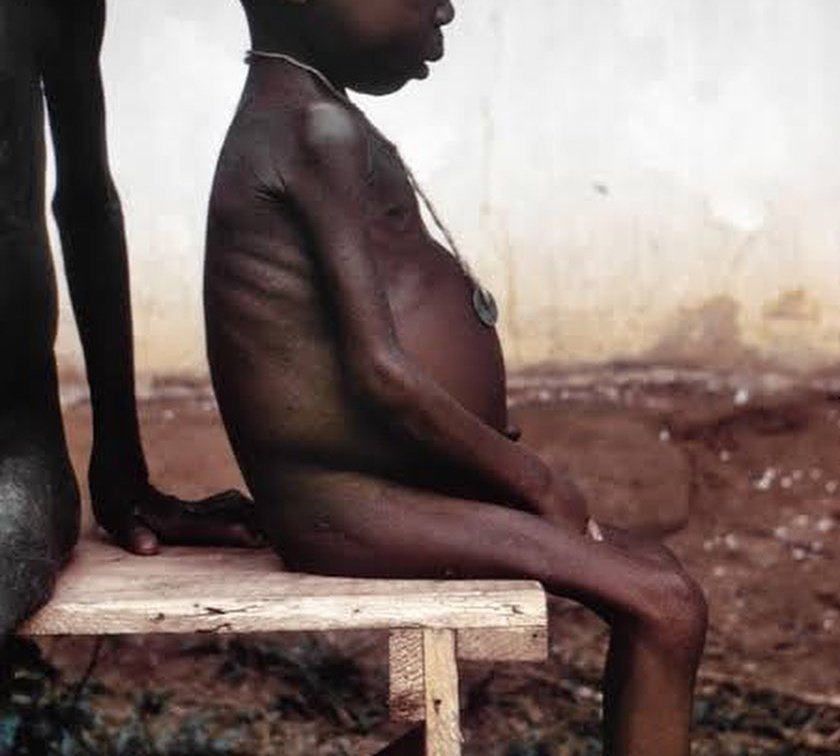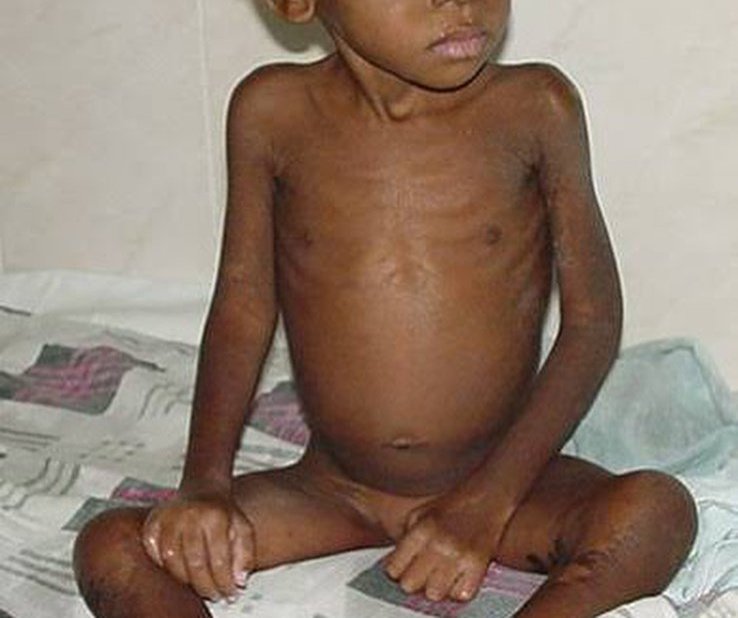
Malnutrition: Kwashiorkor & Marasmus, What you should know
Malnutrition is a very serious condition that makes children ten times more likely to die from common childhood illnesses such as such as diarrhoea, pneumonia and malaria. Every year, nearly 420,000 children under five die as a result of this deadly combination in Nigeria.
Every infant and child has the right to good nutrition according to the “Convention on the Rights of the Child”. No child should be born to suffer. They did not ask to be brought into the world. Once they are born, they deserve all the love and care that they can get. It is the responsibility of the parent to provide this love and care.
Kwashiorkor & Marasmus are both forms of severe malnutrition due to poor nutrient intake. Both are dangerous to you & your child.
These conditions of malnutrition especially kwashiorkor is very common in our nation, and efforts are needed to eradicate them and build a healthy generation. This is mainly possible through education (especially family planning, preconception planning) and government policies and efforts.
Table of Content
What is Malnutrition?
According to the WHO, malnutrition is defined as “the cellular imbalance between the supply of nutrients and energy and the body’s demand for them to ensure growth, maintenance, and specific functions.“
What this means in simple terms is that when a child is not getting enough energy, in form of food to balance the work that the child is doing, in form of play, growth, etc, we say that the child is malnourished.
You should know that there are different forms of Malnutrition, such as Kwashiorkor, Marasmus, Obesity, etc. Yes, Obesity is a form of Malnutrition, known as overnutrition but most efforts on malnutrition is focused on Undernutrition.
What is Kwashiorkor?
Kwashiorkor is a form of severe malnutrition that happens when your child consumes enough carbohydrates (calories), but with insufficient protein. Kwashiorkor is distinguished by swelling (or edema) & enlarged liver with too much fat. Children with Kwashiorkor tend to have a normal size head, large tummy (abdomen), but you’d notice that other areas of their body (hands, feet, etc) are all small & tiny.

We see this in areas of war, conflicts, famine (such as in areas of Northern Nigeria affected by the boko haram or fulani herdmen crisis) or poor food supply as has been reported in some areas due to lockdown. The chances of a child developing Kwashiorkor increases after 18 months of age.
What is Marasmus?
Marasmus is total energy deficiency in all forms, including proteins. You see mainly muscle wasting & loss of skin fat. It can occur in anyone with severe malnutrition but usually in children. Body weight is reduced to less than 62% of the normal (expected) for age. The chances of a child having Marasmus increases before the age of 1 years.

This is one reason proper breastfeeding & infant nutrition is crucial during early life and let me remind us that breast milk is the only food & drink your baby needs until the age of 6 months. Thereafter, your child needs different kinds of food & should be fed 5 times a day, in addition to breast milk.
Causes of Malnutrition
A) Insufficient access to food
B) Inadequate maternal and childcare practices
C) Poor sanitation/water and inadequate health services
Symptoms & Signs of Malnutrition
Suspect malnutrition In a child when you notice the following;
- An Unhappy & irritable, apathetic child.
- Changes in Hair & skin: This are signs of vitamin deficiencies, proteins and essential fatty acids.
- Diarrhea & dehydration
- Infections: malnutrition makes children prone to repeated infections, because their immunity would be low, and they would not be able to fight infections effectively.
- Pale skin & palms due to anaemia from iron, protein & folic acid deficiency and also due to repeated infections.
- Swollen Abdomen: due to enlarged liver.
- Blindness can also result from deficiency in vitamin A.
Treatment of Malnutrition
You should take any malnourished child to the hospital immediately for urgent medical attention. There are a lot of available nutritious options of readily available foods which are cheap to help manage the condition. You can see video below.
Approach To Tackling Malnutrition In Nigeria:
The following economical approach should be employed to tackle the menace of acute Malnutrition in Nigeria.
- Identify local foods that will help mothers better nourish their children
- Use of locally sourced and prepared food ingredients consisting of the basic required nutrients, such as shown above.
- Encouraging the use of community health ambassadors to organize practical seminar and train pregnant and breastfeeding women to prepare nutritious foods for themselves and their children from local sources.
- Educate women and pregnant mothers on WHO standard using weight, length and upper arm circumference to measure the nutritional status of their children.
- From the training they receive, these women can now prepare therapeutic foods themselves from local ingredients.
- But no matter how available the ingredients are, the women need money to purchase them. Therefore, government need to create policies to enable business capacity building for these women to ensure that they can keep their children healthy.
A malnutrition free generation is possible if mothers are properly educated about local foods and children are treated with those locally available nutritious foods.
Prevention of Malnutrition
- Education & Proper counselling of expectant mothers on the right feeding practices as well as ideas on family planning.
- Government policies & strategies to improve conditions for low & middle income families.

Leave a reply